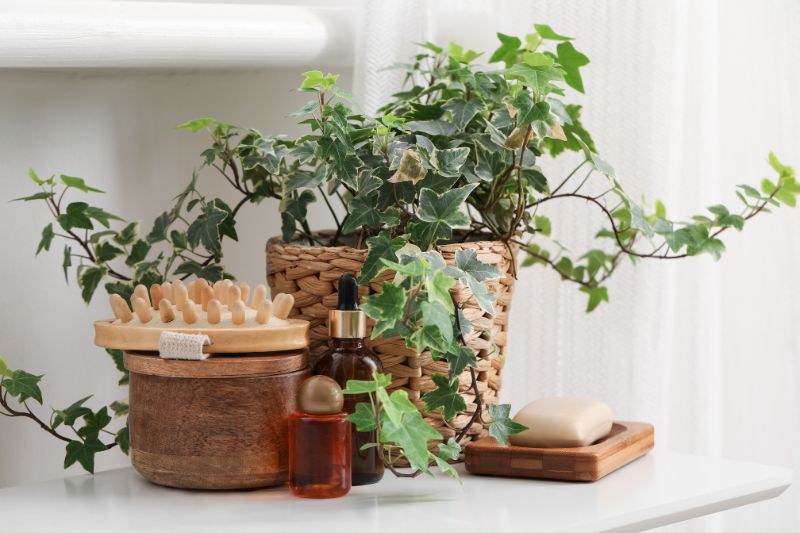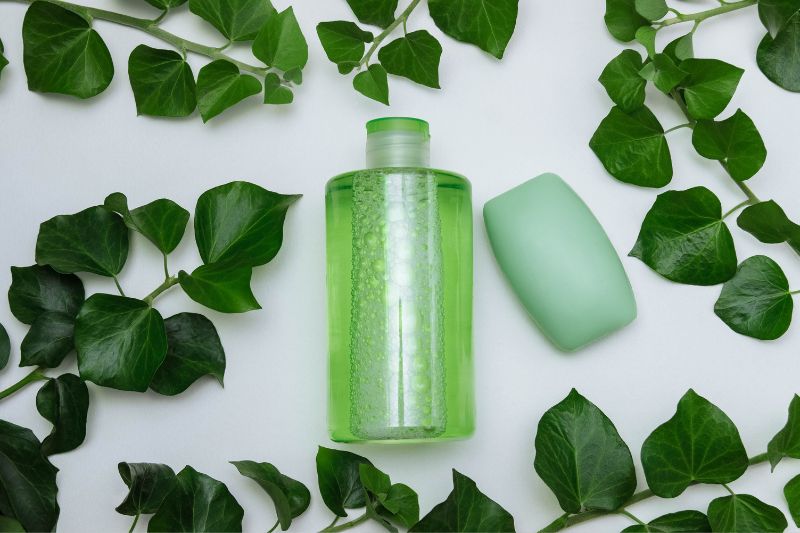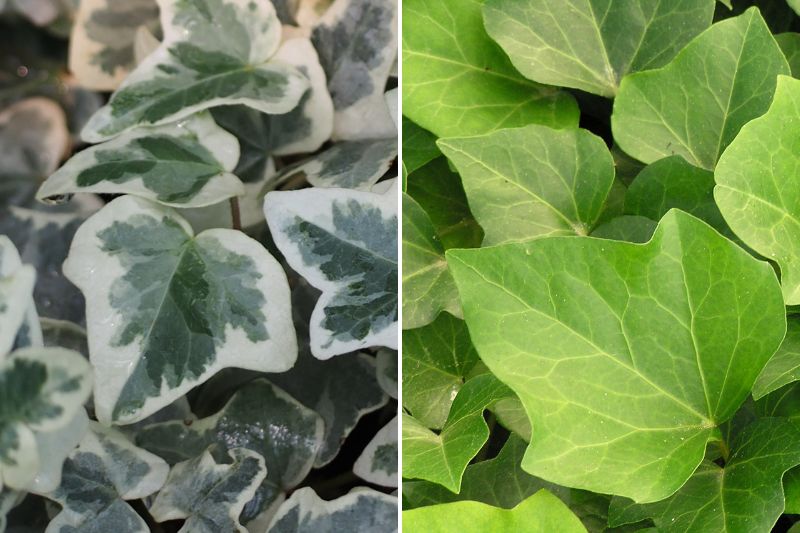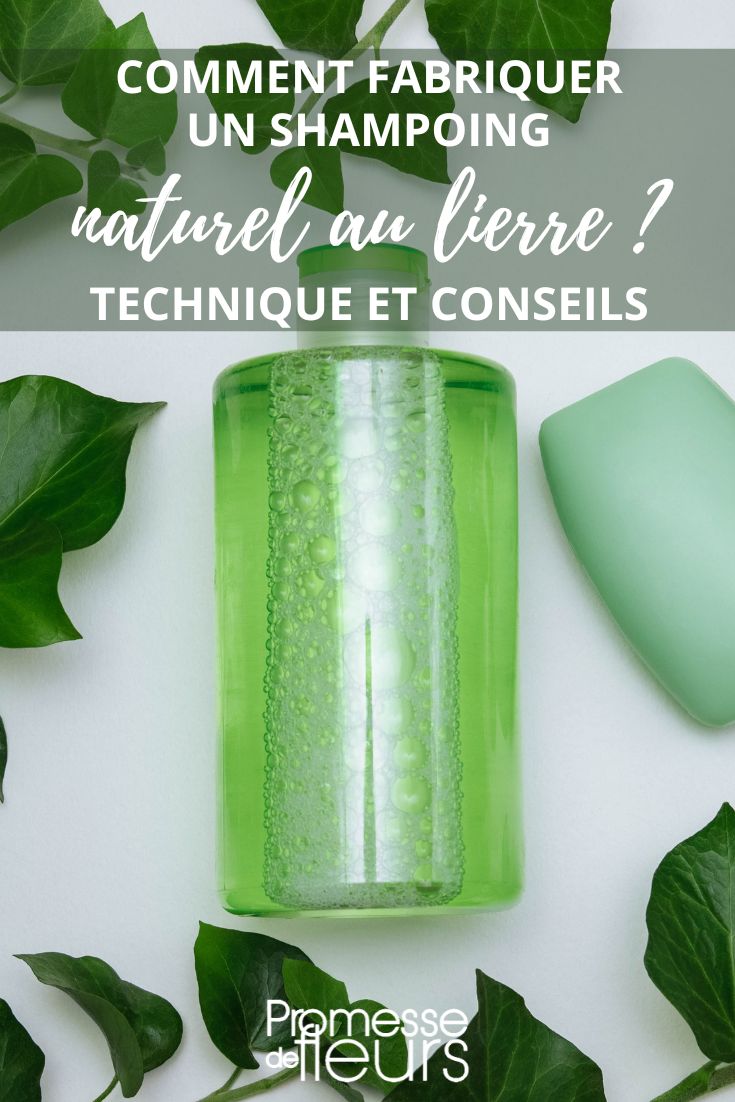Ivy does more than just climb and beautifully decorate walls and fences in the garden. This versatile plant is also known for its cleansing, soothing, and purifying properties, and as a valuable natural ingredient in cosmetics. If you already have ivy on hand, or if you're simply curious about the benefits of this plant for your hair, this tutorial is for you. We will guide you through all the necessary steps, from harvesting ivy to making your own shampoo. So, are you ready to transform your ivy into a natural beauty product? Follow the guide!

Why using ivy in hair care?
Ivy, a climbing plant found in our gardens and forests, has much more to offer than its ornamental appearance. Since ancient times, ivy has been used for medicinal and cosmetic purposes.
Ivy is particularly effective in hair care due to its richness in saponins. These natural compounds act as cleansing agents and can replace the sulfates often found in commercial shampoos. Not only do saponins help remove impurities, but they are also gentler on the scalp and hair.
Finally, ivy is an accessible and eco-friendly option. Incorporating it into your hair care routine is not only good for you and your wallet, but also for the planet.
Choosing and harvesting ivy
Choosing the right variety of ivy
- Common ivy (Hedera helix): This is the most common and widely used variety for homemade shampoos. It is rich in saponins and easy to find. Various cultivars of this ivy are available, such as the variegated and grey-green foliage of Hedera helix 'Glacier'.
- Canary ivy (Hedera algeriensis (canariensis)): Although less common, it is also rich in saponins and makes a lovely alternative.
When to harvest?
Ivy can be harvested almost all year round, but it is generally richer in saponins during autumn. For this shampoo, you will need a handful of ivy leaves. Wear gloves when handling ivy to avoid skin irritation.
How to make ivy shampoo?
Necessary equipment
Utensils
- A large container or pot to infuse the ivy leaves
- A funnel
- A coffee filter or a piece of fine cloth
- A bottle or airtight jar to store the shampoo
- Pruning shears to cut the ivy
- Gardening gloves to handle the ivy
Ingredients
- A handful of freshly harvested ivy leaves
- 300 ml of spring, distilled, or filtered water
- Optional: essential oils for fragrance
Preparation steps
1- Start by thoroughly washing the ivy leaves in cold water to remove any dirt or small insects.
2- You may cut the leaves into small pieces with kitchen scissors to more easily release the saponins during infusion.
3- Place the cut leaves in a pot or large container and pour in the water. Turn on the heat, bring the water to a boil, then turn off the heat. Cover and let steep for about 15 minutes.
4- After steeping, use a coffee filter, fine mesh strainer (sieve), or a piece of fine cloth to filter the liquid. Ensure no pieces of ivy leaves remain that could be difficult to remove during rinsing or could irritate the scalp.
5- If you wish to add essential oils for fragrance, now is the perfect time. A few drops of lavender or rosemary oil can provide a pleasant scent.
6- Pour the filtered shampoo into a bottle or airtight jar. Store it in the refrigerator to prolong its shelf life, which is generally 1 to 2 weeks.

Application on hair
- Start by wetting your hair with lukewarm water.
- Take a small amount of ivy shampoo and apply it to your scalp and hair. Gently massage in circular motions to evenly distribute the product.
- Leave the ivy shampoo on for 2-3 minutes.
- Rinse thoroughly with lukewarm water until all shampoo residues are removed.
Tips and precautions
Making your own ivy shampoo is a rewarding experience, but as with any homemade preparation, some tips and precautions are advisable:
Skin test
Before using your shampoo for the first time, perform a small skin test to ensure it does not cause irritation or an allergic reaction.
Shelf life
The ivy shampoo can be stored in the refrigerator for 1 to 2 weeks. Avoid keeping it longer to minimise the risk of bacterial growth.
Responsible use
Remember that ivy is a plant that contains saponins. Use this shampoo only for external application: it should never be ingested. Keep it out of reach of children and pets. Avoid contact with eyes. In case of contact, rinse immediately and thoroughly with water.

































Comments